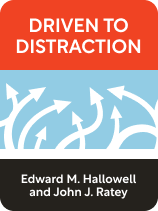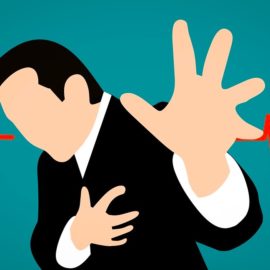

This article is an excerpt from the Shortform book guide to "Driven to Distraction" by Edward M. Hallowell and John J. Ratey. Shortform has the world's best summaries and analyses of books you should be reading.
Like this article? Sign up for a free trial here.
How do you treat ADHD? What is the treatment process like?
In Driven to Distraction, Edward M. Hallowell and John J. Ratey explore how to begin treatment for people with ADHD. Treatment comes in all sorts of ways, and it’s important to find the solution that’s right for you.
Below we’ll look at the different steps you must take to treat ADHD.
The Treatment Process
How do you treat ADHD? ADHD can interfere with your success and quality of life, but finding the right treatment can reduce your symptoms and help you make the best use of your strengths. Indeed, people who have ADHD can flourish when their unique needs are met.
(Shortform note: In addition to finding the right treatment, it can also help to develop a “growth mindset” in order to make the best use of your strengths. Helping children shift their focus from immediate rewards to long-term growth helps them manage their stress over difficult tasks and can even change the physiology of their brains, strengthening connections between neurons to improve learning and performance.)
Treatment involves diagnosing the condition, educating yourself and others about it, implementing structure in your life, participating in therapy, and taking medication as needed. Let’s look at each of those steps.
1. Obtain a Diagnosis
According to the authors, the process of diagnosis begins with the patient’s decision to seek help for the problems they’re having. In children, this can be prompted by academic or behavioral difficulties. In a school environment, it’s easy to spot the traits of ADHD in children, especially if there’s an adult in the school who’s familiar with the condition. The authors estimate that at least 5% of children may have ADHD, though underdiagnosis may be dragging this statistic down.
According to the authors, parents who seek ADHD treatment for their children eventually ask if they themselves might have it. Since it can be passed down genetically, it’s probable that at least one parent of a child with ADHD will also have ADHD. Often they’ve received a different diagnosis for a condition that looks like ADHD but have had limited success with the treatment, since treatment for ADHD is so different from treatment for conditions that may present similarly.
Indeed, it can be hard for an adult to receive an accurate ADHD diagnosis. This is because there’s no equivalent environment like school that can act as a reliable method of screening. This can make an adult ADHD diagnosis come as a big surprise, and people often only consider they might have ADHD by hearing about it from others who have it. The authors estimate that ADHD affects at least 10 million adults in America.
According to the authors, many patients express extreme relief upon learning they have ADHD, as they have spent their lives feeling like they’re broken or bad for struggling with things that are supposed to be “easy” or “intuitive,” when in reality their brains naturally function in a way that makes these things difficult. Learning there’s a name, community, and treatment for these problems can be liberating and validating, and it’s the first step in treating them.
2. Educate Yourself and Others About ADHD
Once you’ve received a correct diagnosis, the authors recommend that you begin educating yourself about ADHD. This involves learning as much as you can about ADHD and teaching family, teachers, and peers about it. Because ADHD impacts every facet of a person’s life, it’s important to help others understand what’s going on and what they can do to help.
Regarding how much to tell children, the authors advise being as honest as possible. A child with ADHD will benefit from understanding what’s going on in their brains, and keeping them in the dark about it will likely cause secondary symptoms like low self-esteem and self-doubt.
Similarly, the authors recommend being honest with the child’s peers and classmates. If a student is given accommodations for their condition in school, other students are bound to notice. Correctly educating those children about why those accommodations are being made can help normalize the condition. Conversely, treating ADHD like something to hide creates a stigma around it, which can compound feelings of shame and guilt.
3. Bring Structure to Your Life
Once everyone involved has a strong understanding of ADHD, the next step the authors recommend is to implement structure to help organize your thoughts and actions. Adding structure to your life can involve memory aids such as reminders, keeping notepads in strategic places, making lists, and setting routines and schedules. Establishing a pattern for your life, like doing the same tasks on the same day at the same time every week, can turn them into habits, which takes the burden off the brain to remember to do these things.
4. Seek Out Therapy
You can implement education and structure on your own, but according to the authors, it may also help to have a therapist to guide you through the treating ADHD. The authors specifically recommend participating in psychotherapy.
In beginning psychotherapy, it’s important to find a therapist who is knowledgeable about ADHD. This will make it easier for them to understand you and your needs and for you to bond with them.
The authors say that group therapy can be particularly effective in treating ADHD in both children and adults. This is because, especially for children, many of the symptoms of ADHD will only present in a group setting and not in one-on-one therapy sessions. For instance, if the child struggles with sitting still in class, interrupting classmates or the teacher, and paying attention to a lesson, these symptoms may not come up in therapy unless it’s in a group setting.
Further, group therapy helps adults meet others who understand them and their struggles. They can relate to and validate each other’s difficulties and can also teach each other about strategies they’ve found effective. According to the authors, ADHD often hinders connection with others, and strengthening connections can be one of the most effective treatments for the condition.
According to the authors, ADHD can cause difficulties not only for the person with the condition but also for others close to that person. The distractibility of ADHD can make people believe that their loved one with ADHD doesn’t care about what they have to say, and the forgetfulness can make them seem thoughtless and rude.
An individual with ADHD may also become the scapegoat for all of the family’s problems, as their perceived lack of effort makes them an easy target. Similarly, a sibling may feel neglected if another child seems to get more parental attention than they do, and ADHD draws a lot of attention.
Couples and family therapy can be useful in helping everyone deal with the condition. However, by the time such therapy is pursued, it’s likely that resentment and hostility will have developed within the group. Families and couples should approach therapy with a willingness to change and a desire to make things better for everyone.
5. Medication
According to the authors, some people with ADHD can successfully manage their condition through a combination of education, structure, and therapy. Others may need to add a medication to their treatment regimen. Medications used to treat ADHD include stimulants, such as Ritalin, Concerta, and Adderall, and antidepressants, such as Wellbutrin and Strattera. These drugs work by increasing the brain’s levels of certain neurotransmitters: norepinephrine, dopamine (in the case of stimulants), and serotonin (in the case of antidepressants). This improves focus and can also act as a mood stabilizer.
Once an ADHD diagnosis is made and you opt for medication, you’ll need to identify the specific symptoms you want to target—for instance, inattentiveness, difficulty regulating emotions, or trouble staying organized. Selecting these target symptoms will make it easier to tell if the medication is helping. The effectiveness of medication varies from person to person, and it doesn’t work for everyone, but for some, it can be life-changing.
Still, medication can be a tricky subject, as it carries social stigma and misconceptions. Patients with ADHD—and particularly parents of children with ADHD—may resist trying medication. They may feel like depending on a medication is a weakness, or they may object to what they see as “drugging” their child. Despite some common misconceptions, medications don’t cloud your senses or strip away your personality, nor are they addictive at the dosage level they’re given to treat ADHD.
Some people may also feel that being put on medication is proof that there’s something wrong with them or that they have a cognitive disability when they don’t believe that label applies to them. The authors emphasize that these feelings should not be dismissed but rather handled respectfully, and that no one should ever feel pressured to take medication they don’t want to take.

———End of Preview———
Like what you just read? Read the rest of the world's best book summary and analysis of Edward M. Hallowell and John J. Ratey's "Driven to Distraction" at Shortform.
Here's what you'll find in our full Driven to Distraction summary:
- What ADD is, theories on the possible causes, and potential treatments
- How our knowledge of ADD has changed since the book’s republication in 2011
- Tips for how to minimize your negative symptoms and make the most of your strengths






